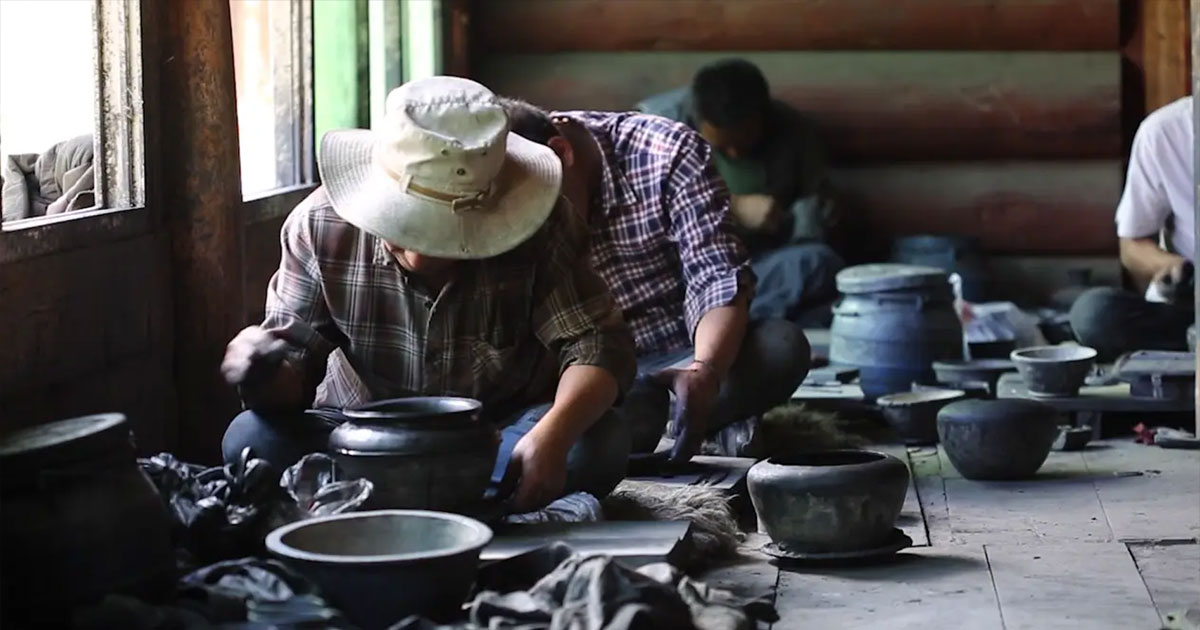Pottery wares are common in Tibetan cultural regions, where they are used as daily utensils (such as plates, bowls, alcohol and water containers, teapots, and urns) and for storing food. Pottery was especially essential to Tibetan daily life before the introduction of metal tools and utensils, which gradually replaced ceramics in certain situations. Archeological findings in recent decades indicate that the art of Tibetan pottery is more than 5,000 years old.
Over the millennia, Tibetan pottery designs have evolved from no apparent patterns to simple lines, woven patterns, and water streaks, and eventually to more complex and artistic designs. This type of refinement paralleled the development of pottery from purely functional usage to the artistic expression—both individually and communally—of Tibetan potters.

Along with technical improvement and artistic experimentation, potters began developing multiple pottery-making styles: coarse sandy wares, glazed pottery, red pottery, and black pottery. Among these various categories, black pottery holds a special place in Tibetan pottery-making culture. The practice survived the winds of tumultuous historical epochs, such as the rise and fall of empires and recent sociocultural upheavals like the Cultural Revolution.
Many pottery-making communities revived and continued their traditions through knowledge preserved by way of oral tradition. Even though demands for pottery as a daily utensil in Tibetan society have declined drastically, many artisans who inherited or learned the techniques from their community elders maintain the traditions to fulfill a market niche at the nexus of growing tourism and cultural preservation movements.
Centers of black pottery today include monasteries, villages, and mobile pottery-training workshops scattered across the Tibetan Plateau. Many contemporary potters use traditional, local resources (clay) and tools (stone, wood, and leather) to make their products. These products include cups, bowls, jars, vases, and teapots that may be used for several purposes: decorating new homes, furnishing the interiors of new cafes and other businesses, and for sale to tourists as souvenirs. The survival and flourishing of Tibetan pottery-making knowledge and tradition inspires hope in many Tibetans who strive to revive and adapt many traditional practices to the contours of modern life.




